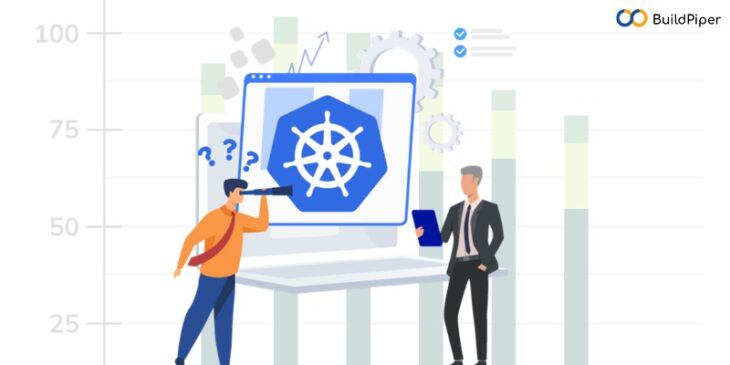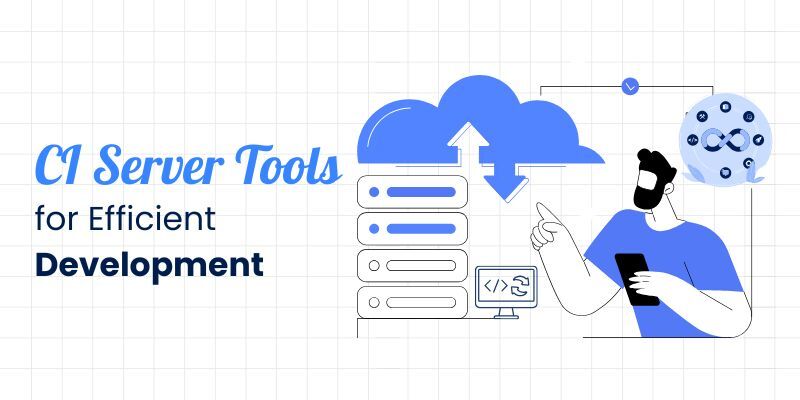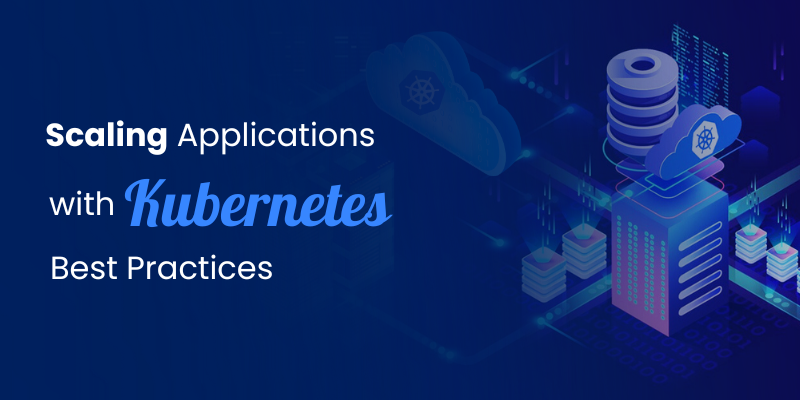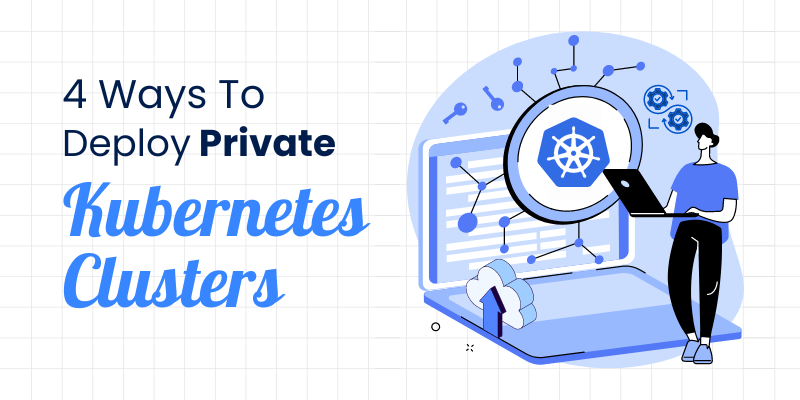
In today’s fast-paced digital landscape, organizations are constantly seeking innovative solutions to streamline application deployment, scale their infrastructure, and improve operational efficiency. Amidst this pursuit, Kubernetes has emerged as a game-changing technology, revolutionizing the world of container orchestration. With its robust feature set and open-source nature, Kubernetes has become the de facto standard for managing containerized applications.
But what exactly is Kubernetes and why has it garnered such widespread acclaim? Here, we’ll delve into the benefits of Kubernetes and explore how it empowers developers and organizations to build and maintain scalable, resilient and portable applications. So, let’s dive into the world of Kubernetes and containerization!
What is Kubernetes?
Kubernetes, often referred to as K8s, is an open-source container orchestration platform developed by Google. It provides a comprehensive framework for automating the deployment, scaling and management of containerized applications. By harnessing the power of containers, Kubernetes simplifies application deployment, enhances resource utilization and ensures high availability in dynamic environments.
Containerization is a method of packaging applications and their dependencies into standardized units called containers. Containers provide isolation and consistency across different computing environments, allowing applications to run reliably and consistently regardless of the infrastructure.
Key Features of Kubernetes
Kubernetes provides a framework for managing containers at scale. It abstracts the underlying infrastructure and provides a consistent set of APIs and tools for deploying, scaling and managing containerized applications. Some key features of Kubernetes include:
- Container Orchestration: Kubernetes manages the placement and scheduling of containers across a cluster of machines, ensuring that the desired state of the application is maintained.
- Scalability: Kubernetes allows applications to scale horizontally by automatically adding or removing containers based on resource utilization and user-defined rules.
- Service Discovery and Load Balancing: Kubernetes provides a built-in service discovery mechanism, allowing containers to communicate with each other using stable network addresses. It also distributes incoming network traffic to containers using load balancing.
- Self-Healing: Kubernetes monitors the health of containers. It automatically restarts failed containers or replaces them with new ones to ensure the desired state of the application is maintained.
- Rolling Updates and Rollbacks: Kubernetes supports rolling updates, allowing applications to be updated with minimal downtime. If any issues arise, it also facilitates rollbacks to previous versions.
- Storage Orchestration: Kubernetes provides a way to manage persistent storage volumes and attach them to containers as needed.
Kubernetes has gained popularity due to its ability to simplify the deployment and management of containerized applications. Also, it enables organizations in seamless and secure management of microservices architecture.
[Good Read: Avoiding The Kubernetes Cost Trap!]
Benefits of Kubernetes
Kubernetes is an open-source container orchestration platform that helps automate the deployment, scaling and management of containerized applications. Kubernetes and containerization provide numerous benefits to organizations and developers looking to build and maintain scalable, resilient and portable applications. Here are some of the key benefits of Kubernetes:
- Containerization: Kubernetes leverages containerization technology, such as Docker, to encapsulate applications and their dependencies into isolated, lightweight units called containers. Containers offer several advantages, including improved resource utilization, easy application packaging and consistent behavior across different environments.
- Scalability: Kubernetes enables effortless scalability of applications. It allows you to scale your microservices applications horizontally by adding or removing instances, known as pods, based on the workload demands. This helps ensure that your application can handle increased traffic or accommodate higher resource requirements. This improves performance and responsiveness and is especially needed while migrating workload to DevOps.
- High Availability: Kubernetes supports high availability by providing automated failover and load balancing mechanisms. It can automatically restart failed containers, replace unhealthy instances and distribute traffic across healthy instances. This ensures that your application remains available even in the event of infrastructure or container failures. This helps reduce downtime and improve reliability.
- Resource Efficiency: Kubernetes optimizes resource allocation and utilization through its advanced scheduling capabilities. It intelligently distributes containers across nodes based on resource availability and workload requirements. This helps maximize the utilization of computing resources, minimizing waste and reducing costs.
- Self-Healing: Kubernetes has self-healing capabilities which means it automatically detects and addresses issues within the application environment. If a container or node fails, Kubernetes can reschedule containers onto healthy nodes. It can also replace failed instances and even perform automated rolling updates without interrupting the overall application availability.
- Portability: Kubernetes offers portability, allowing applications to be easily moved between different environments, such as on-premises data centers, public clouds or hybrid setups. Its container-centric approach ensures that applications and their dependencies are bundled together. This reduces the chances of compatibility issues and enables seamless deployment across diverse infrastructure platforms.
- DevOps Enablement: Kubernetes fosters collaboration between development and operations teams by providing a unified platform for application deployment and management. It enables developers to define application configurations as code using Kubernetes manifests, allowing for version-controlled, repeatable deployments. Operations teams can leverage Kubernetes to automate deployment workflows, monitor application health and implement continuous integration and delivery (CI/CD) pipelines.
Kubernetes provides a robust platform for managing containerized applications at scale. Its benefits include improved scalability, high availability, resource efficiency, self-healing capabilities, portability and support for implementing DevOps, Cloud and DevSecOps practices. By leveraging Kubernetes, organizations can streamline application deployment and operations, increase productivity and deliver more reliable and resilient applications.
Wrapping it ALL!
It’s quite evident that this open-source container orchestration platform has revolutionized the way organizations deploy, manage and scale their applications. With its scalability, high availability and portability, Kubernetes empowers DevOps teams to build robust applications that can thrive in dynamic environments required for Cloud and DevSecOps implementations.
By leveraging Kubernetes, organizations can optimize resource utilization, reduce downtime and improve the overall reliability of their applications. Its self-healing capabilities and automated failover mechanisms ensure that applications remain available even in the face of failures or disruptions.
However, managing Kubernetes clusters can be complex and resource-intensive, especially for organizations with limited expertise in containerization and orchestration. Managed Kubernetes platforms such as BuildPiper help alleviate these challenges by providing a fully managed environment for running Kubernetes clusters. They abstract away the underlying infrastructure complexities and provide a streamlined user interface to interact with and manage the clusters.
The approach to Managed Kubernetes Delivery with BuildPiper goes beyond the initial setup and ease of manageability and is aimed at making Kubernetes – Microservice application ready! Managed Kubernetes delivery is structured around 4 primary levers that club together to enable production-ready Microservices.
- Setting up secure, scalable, compliant and cost-optimized K8s Cluster
- Deep insights and observability
- Configuration & Maintenance for Microservices ready K8s
- Enhanced Production-Grade Microservice Tooling
BuildPiper allows you to drive business value across microservices application delivery from Day 1 with a 10X reduction in time & investments needed and a shift left philosophy & NoOps mindset for multi/hybrid cloud.
Know more about this perfect Kubernetes management console that enables seamless cluster management in combination with other functionalities of Managed Microservices, Secure CI/CD Pipelines, Security, Compliance & Observability and much more! Schedule a DEMO NOW!



